Renovation of a Revox B77 mk II reel to reel recorder
Introduction
On May 25, 2024, I purchased a reel-to-reel tape recorder, a second-hand Revox B77 mk II. It is the 2-track HS (High Speed) model, capable of reading magnetic tapes at a speed of 7.5 to 15 inches per second (ips). The recorder had not been used for several years, but was repaired in 2000. The person who sold it to me told me that it belonged to his father, a guitarist in a band in the Montpellier area in the 1980s, who had died some time before. The recorder was used for a long time and was in need of a major overhaul. The heads were not yet at the end of their life, but they were quite worn. It was the model I was looking for, albeit with NAB equalization (I would have preferred a CCIR model, but it can be modified) and the seller asked a reasonable price given the condition of the recorder.
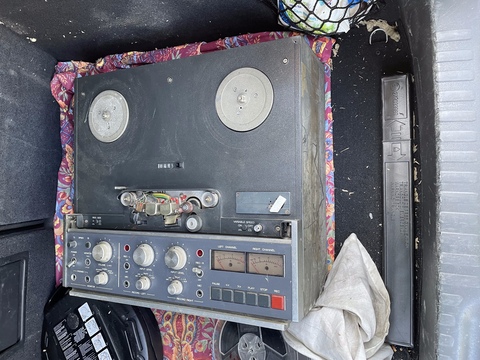
Fig. 1 : How it started...
This machine occupied my spare time for several weeks. I really enjoyed working on it as it is relaxing to be able to concentrate on such things. It is a nice recorder with relatively simple mechanics. Moreover, spare parts are fairly easy to source. However, their price is in line with the machine's reputation, which is highly valued by those interested in such things.... The electronic circuits are modular, easily accessible, and based mainly on discrete transistor amplifiers. There are very few components specific to these circuits, which makes the recorder easily repairable, provided you know how to get your hands on it. Overall, this is a solid, well-designed machine that is pleasant to repair and adjust. By the way, this page is not a detailed description of all the work I have done, just a list. Do not contact me to ask if I can repair your tape recorder; I do not offer technical assistance for this kind of thing.
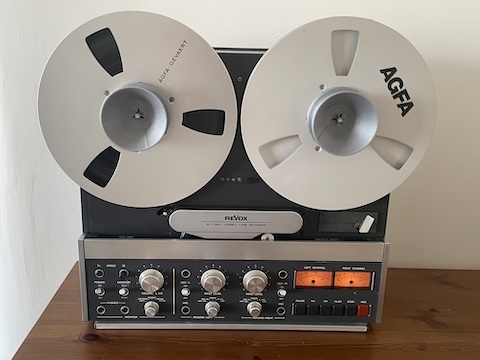
Fig. 2 : ...How it's going
Actions performed
- Replacement of filter capacitors on the power supply (well known to have a tendency to explode the first time power is applied after a long period!).
- Very thorough general external and internal cleaning.
- Disassembly and cleaning of knobs and front panel.
- Replacement of the ball bearings of the two reel motors (and their retaining rings).
-
Replacement of the ball bearing in the left tape guide
and installation of another ball bearing in place of the fixed ring in the right tape guide (RP99 configuration). - Lubrication and greasing a few strategic points.
- Purchase of a head cover panel (the original had been lost).
- Cleaning and sanding of paint in poor condition on the rear box.
- Replacement of all electrolytic capacitors (aluminum and tantalum) in audio circuits.
- ESR check of all other capacitors and replacement there where necessary.
- Replacement of VU-meter bulbs.
- Replacement of an adjustment trimmer in poor condition.
- Replacement of the levers of the three switches (MONITOR, REC-L, REC-R) of which two were broken.
- Correction of the position of the ground wire on the counter panel (its path was incorrect, probably due to the 2000 repairs.
- Replacement of the three motor capacitors. The originals were beginning to be leaky, oozing some kind of sticky tar.
- Capstan cleaning and pinch roller replacement.
- Repair of trident supports on coil plates, 3D printing of new retaining clips.
- 3D printing of two NAB adapters for 10.5-inch reels.
- Replacement of the counter belts.
- Playback adjustment with a test tape (VU-meter playback levels and peak LEDs).
- Adjustment in blank tape recording (levels, bias, equalization on the two playback speeds).
- Sanding, filler, primer and painting of the cabinet.
- Cleaning contacts of record relays.
- Cleaning and reconditioning of the heads by Photovox Technology.
- Complete heads alignment with test tape.
Video 1: The Revox B77 mk II reproducing the Silk Dust Original Soundtrack
As a conclusion
For calibrations I used an oscilloscope for azimuth adjustment (which was already almost perfect) and a Nakamichi T-100 analyzer, which is very useful for this type of measurement. Today my Revox B77 is back in a state that allows me to use it to record my music (have you ever listened to the soundtrack I wrote for my game Silk Dust?).
The Revox B77 mk II is a very nice item. I tested it with a previously used magnetic tape and am waiting for a new tape. The recording and playback are excellent. There is some background noise and it is sensitive to tape deformation, especially at the speed of 15 inches per second (38 cm/s). I will mainly use it to record my own music. I produce digitally, but I like analog items, especially high-quality ones. I will probably try it as an echo and for loops.
While I did the calibration, I monitored the distortion at 400 Hz with the Nakamichi T-100. On brand new RTM LPR90 tape I could obtain a 0.25% THD+N for a signal at -5dB.
I was pleased to note that it is still possible to find all the necessary recording equipment (new tapes, NAB reels, etc.). However, this is quite an expensive world. Being able to maintain the machine myself and having a 3D printer, I can save on so many things, but the tape alone needed to record at 15 ips represents a small investment.
I chose to have my heads reconditioned by Photovox Technology, in Italy. I was pleased to see that there are few companies in the world that offer this type of service and one was just a few kilometres from where I was born. The reconditioned heads look like new.
If you are interested, I described on a Mastodon thread part of the work I did on the machine. Do not hesitate to leave a comment if you wish to!
Pictures of the work done
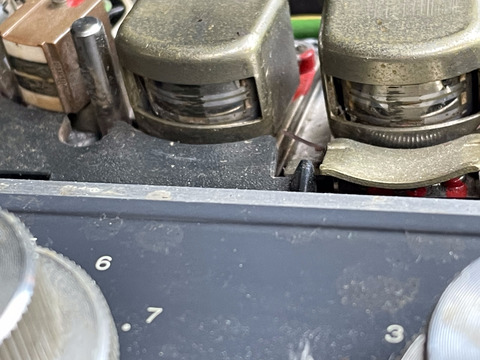
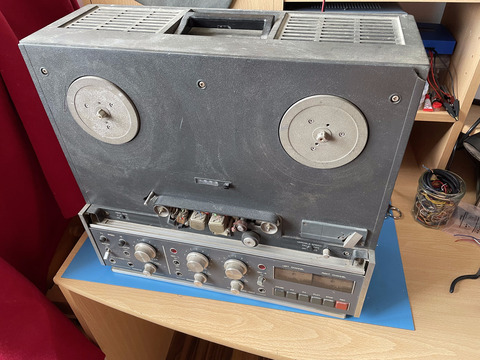
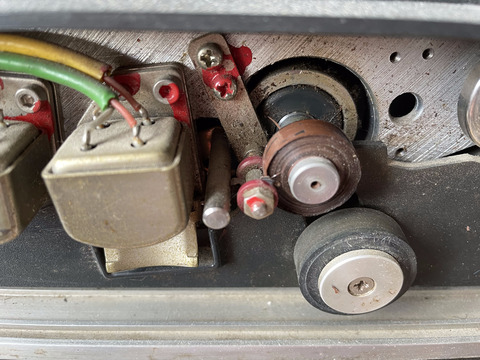
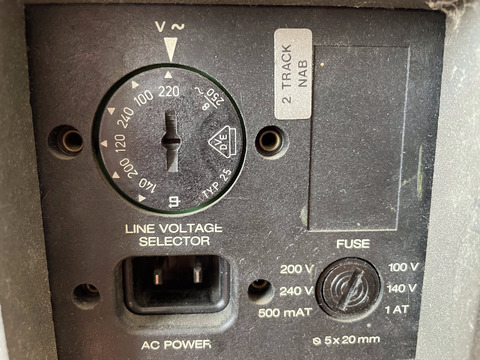
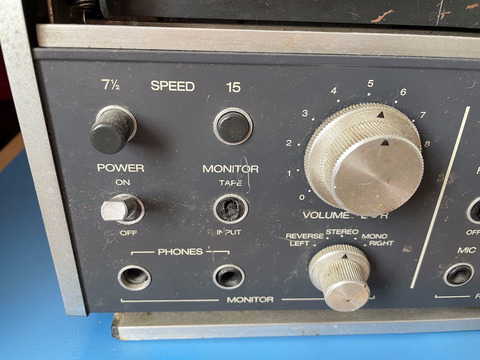
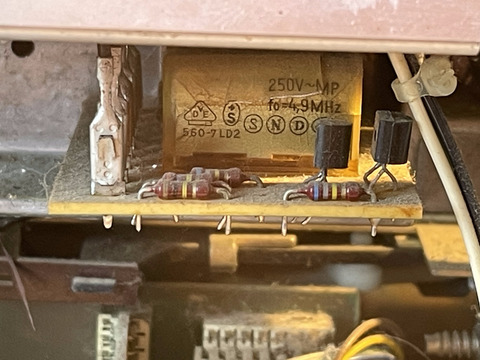
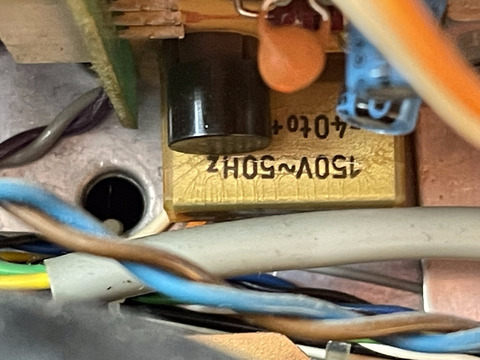
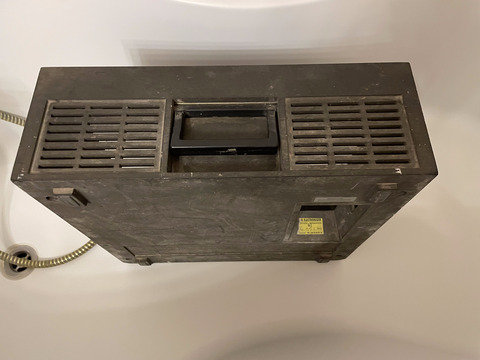
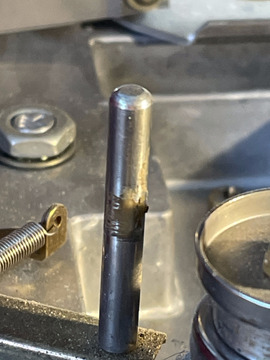
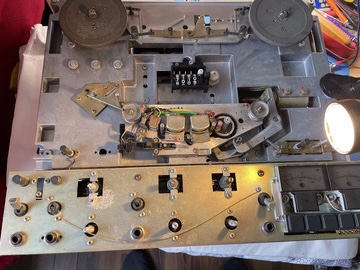
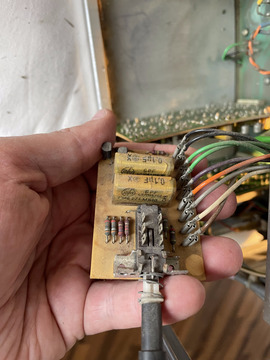
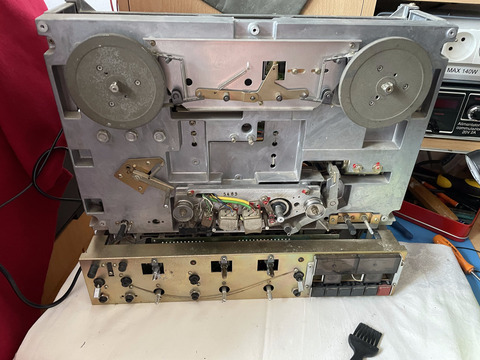
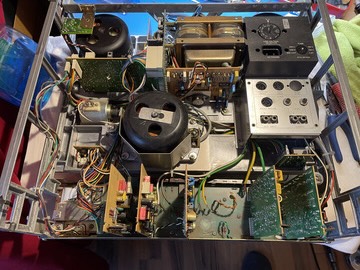
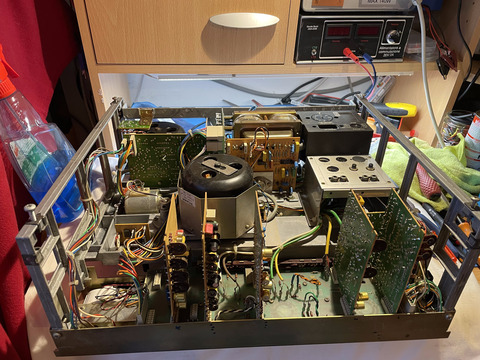
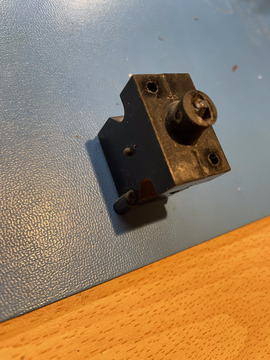
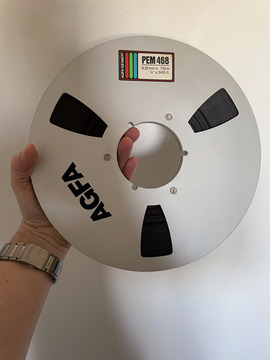
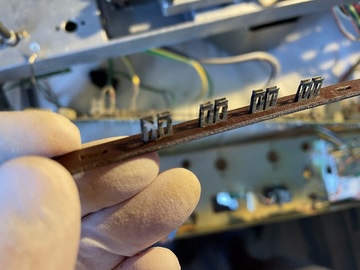
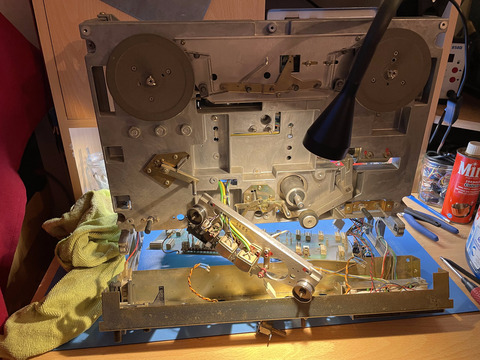
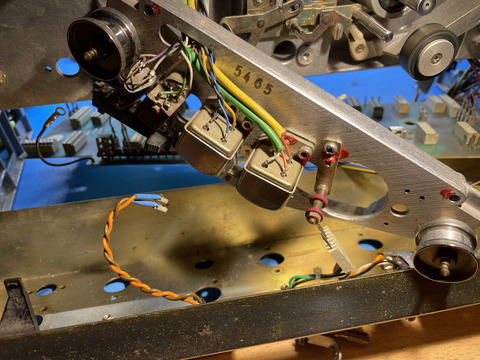
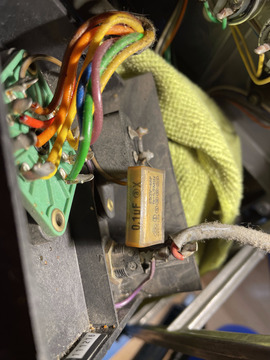
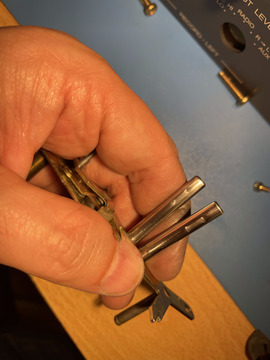
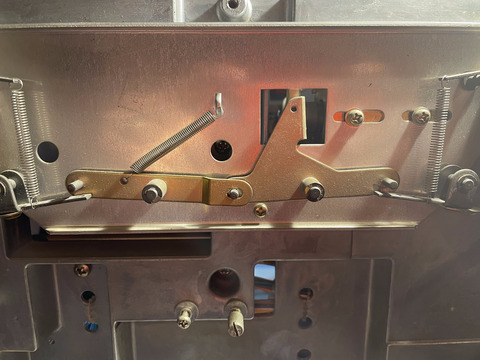
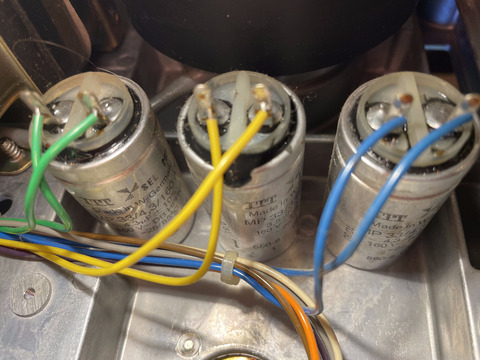
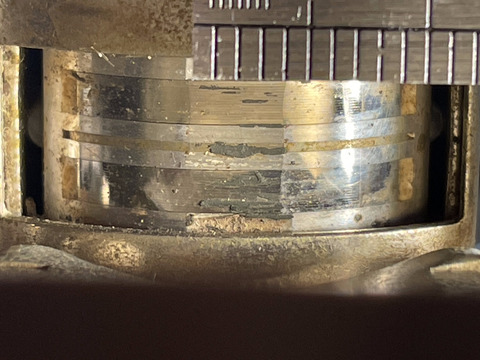
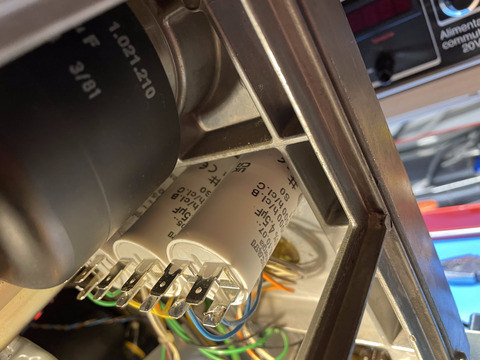
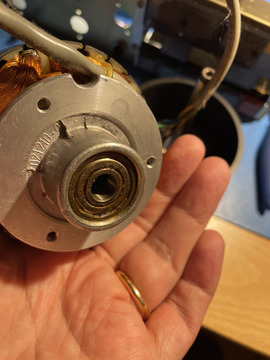
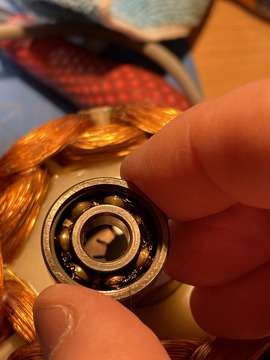
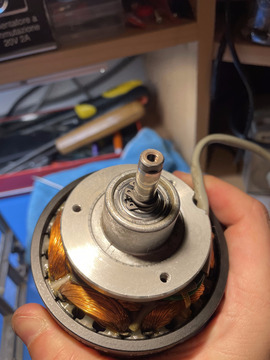
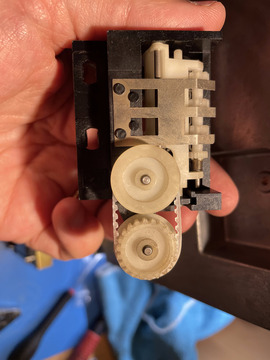
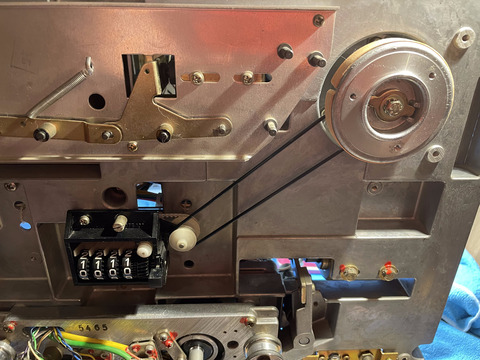
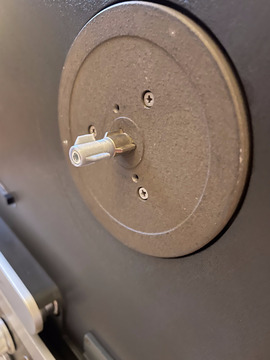
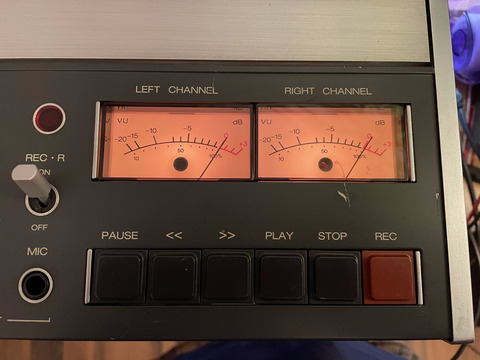
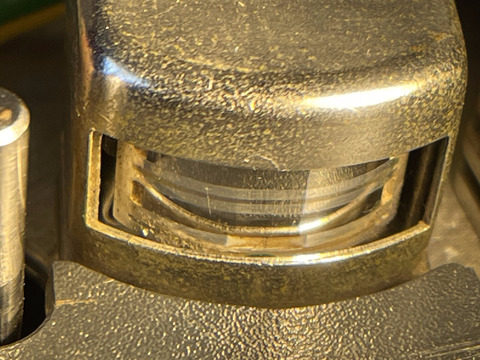
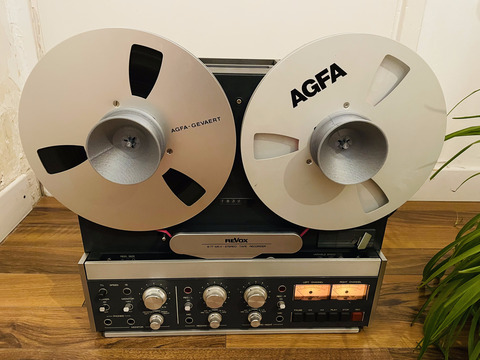
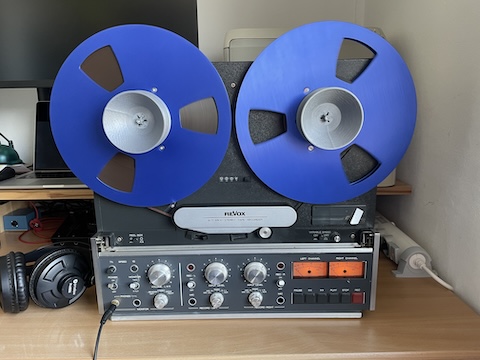
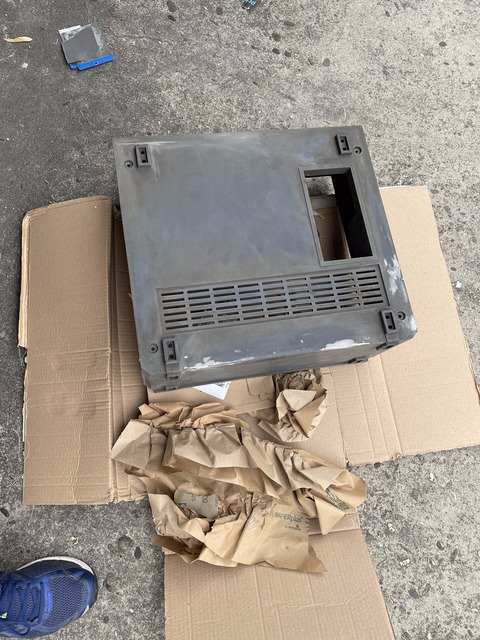
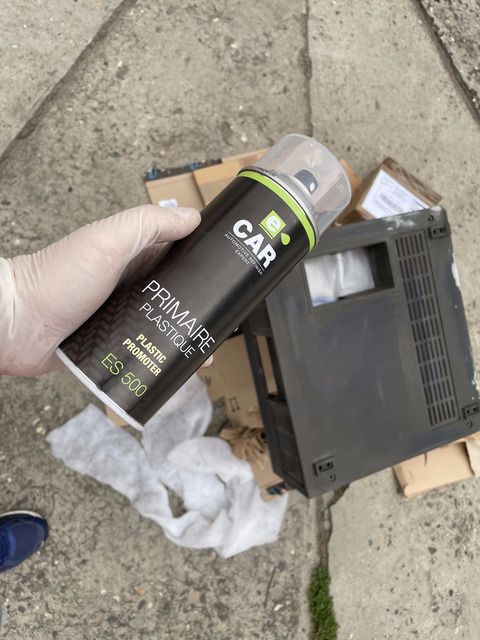
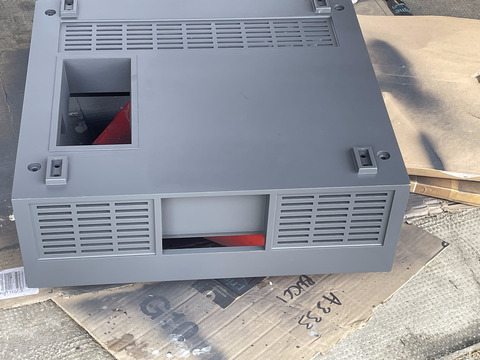
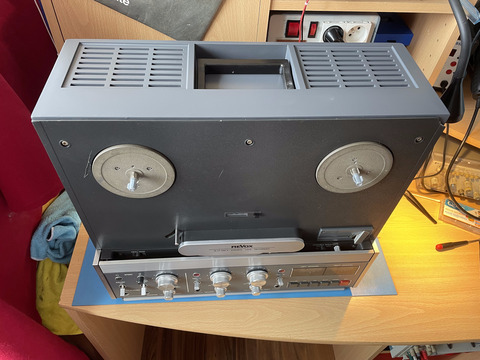
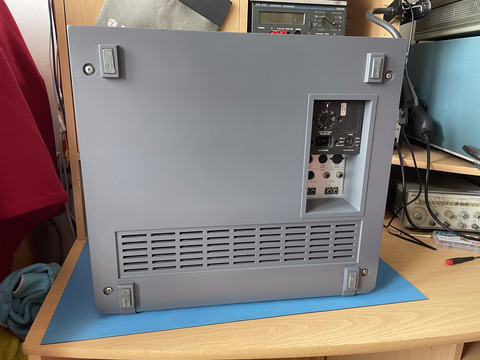
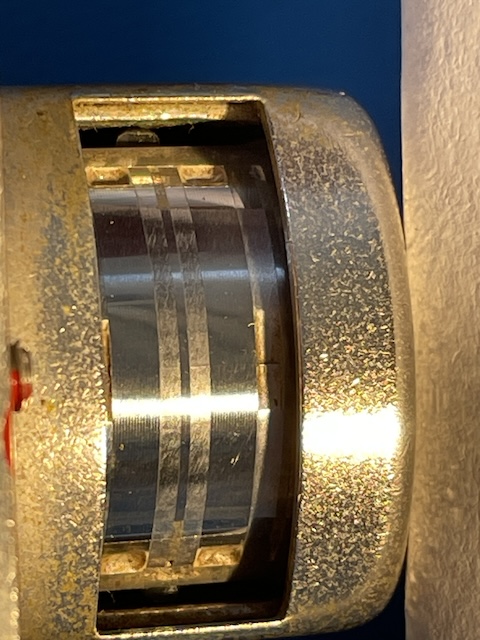
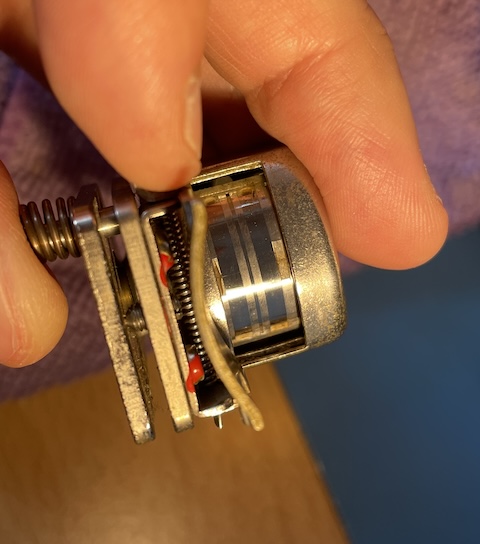
Ball bearing or not?
In October 2025, I had been using the tape recorder with great satisfaction for over a year. So I decided to investigate in more detail whether replacing the right guide with a fixed roller for the magnetic tape with a ball bearing was a good idea or not. It is true that the RP99 uses a bearing in this position, but this model also has an additional tensioner that does not exist on the right side of the B77.
The tape transport of the B77 are not very complex, but it is clear that each component has been carefully considered. For this reason, it is best to investigate carefully by taking measurements. I have a test magnetic tape and wanted to investigate a little further.
The following figure shows the spectrum of a 16 kHz signal recorded at 24 bits and 192 kHz using an M-Audio AIR 192|6 card and Audacity. The spectra are shown between 15850 Hz and 16050 Hz using a spectrogram with a linear frequency scale over 32768 bands. At the top, we see the signal obtained with a ball bearing on the tape support on the right. At the bottom, we see the original configuration, with the fixed roller.
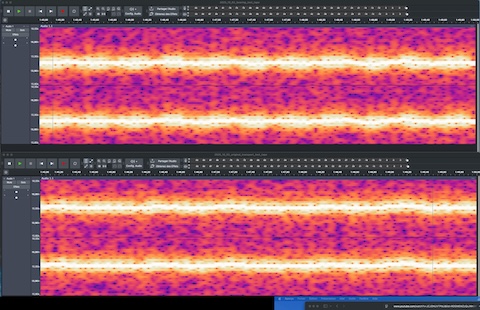
It's a little difficult to compare the results, but I have the impression that the situation for wobble is better for the fixed roller, i.e., the original configuration. This impression is confirmed by the fact that the tape in the fast rewinds is wound more evenly on the reels. The slight change in pitch between the two measurements is simply due to the fact that the recorder was slowly reaching the working temperature and we see the results of a small drift.
Following these observations, I decided to revert to the factory configuration, which uses a fixed roller for the right-hand guide of the B77 tape recorder's magnetic tape.
The sound
If you want to get an idea of the sound you can get from a Revox B77 at 15ips, NAB equalization and a dbx type I noise reduction system, here are another video of my music reproduced by the recorder. Of course, you need to make an abstraction of the audio compression algorithms of YouTube...
Log
- October 3, 2025: Added the paragraphs "Ball bearing or not?" and "The sound" with the two YouTube videos of my original music.
- November 25, 2024: Corrected typos, add mention about head alignment.
- November 17, 2024: Added the video with the Silk Dust soundtrack.
- July 17, 2024: Mention the head reconditioning by Photovox Technology, in Italy. Added mentioning of cleaning contacts of record relays.
- July 3, 2024: Corrected a few typos in the italian translation.
- July 1, 2024: Add pictures and description of the cabinet restoration.
- June 19, 2024: English translation, fixed typos, added distortion measurements for LPR90.
- June 17, 2024: Italian translation, fixed typo in the French version.
- June 15, 2024: first version of the page, in French.
License

This work is licensed under a CC BY, NC 4.0 licence.
